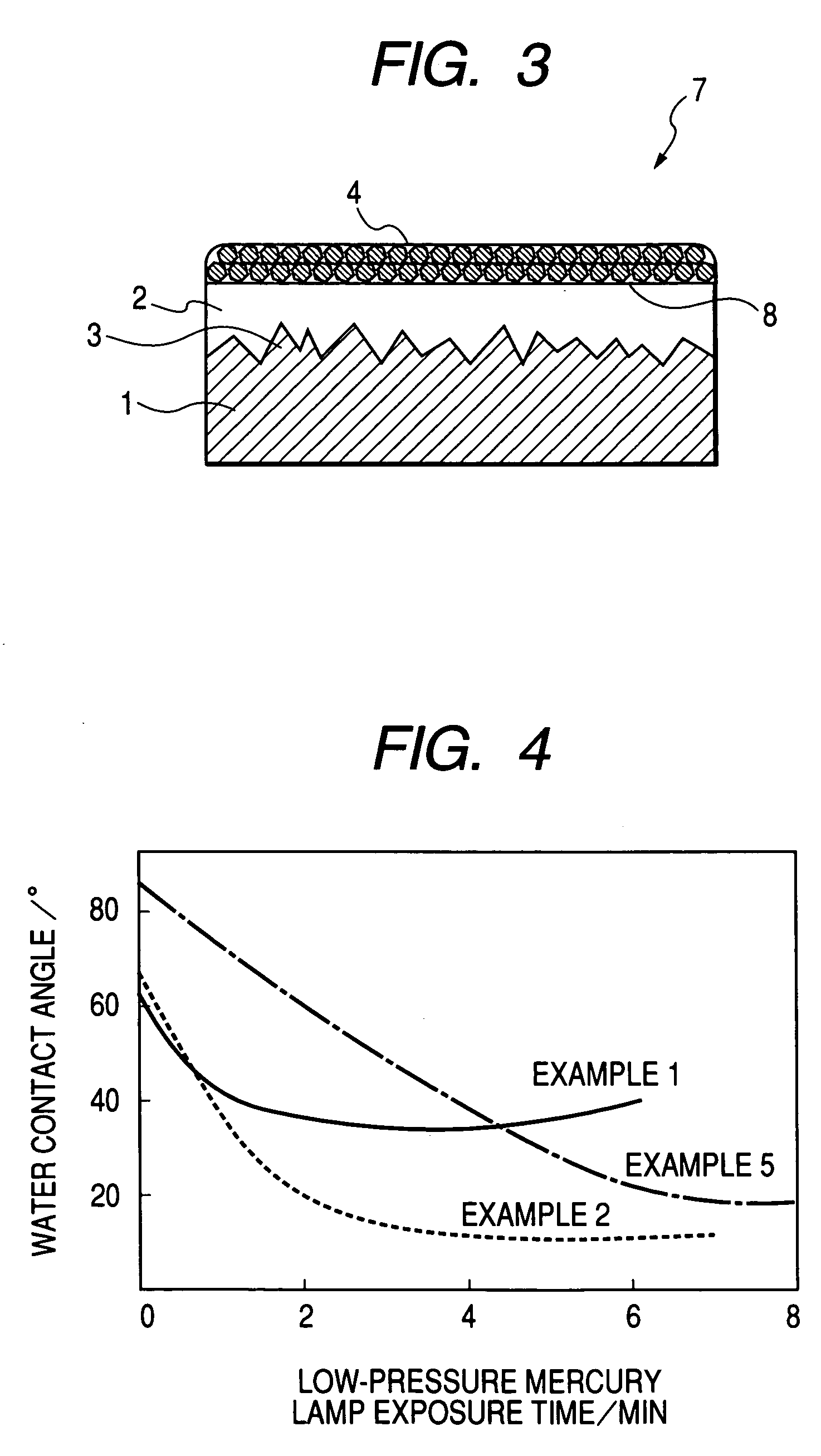Substrate, conductive substrate, fine structure substrate, organic field effect transistor and manufacturing method thereof
a technology of organic field effect transistor and conductive substrate, which is applied in the direction of sustainable manufacturing/processing, instruments, and final product manufacturing, etc., can solve the problems of difficult formation of fine patterns with a line width of 10 m or less, photolithography method requires a large number of steps, and the cost of photolithography method is high
- Summary
- Abstract
- Description
- Claims
- Application Information
AI Technical Summary
Benefits of technology
Problems solved by technology
Method used
Image
Examples
example 1
[0274] The organic resin solution 1 was coated onto a PET film with a dip coater, and thereafter was heated in a hot-air circulating oven at 180° C. for an hour to form an organic resin layer with a film thickness of 3 μm.
[0275] No cracks and the like were observed on the formed organic resin layer surface with visual observation. The water contact angle of the substrate surface was 63°. In addition, the surface resistivity of the organic resin layer surface was measured with a high-resistivity measuring device (made by Mitsubishi Chemical Corporation, trade name Hiresta UP MC P-HT450 [probe URS]), and was 1×1013 Ω / □ or more at an applied voltage of 100 V. Moreover, the heat characteristic of the film obtained by heating the organic resin solution 1 was analyzed with differential scanning calorimeter, and no glass transition temperature (Tg) was observed at 180° C. or less.
[0276] The surface roughness of the obtained substrate was measured with a scanning probe microscope (made by...
example 2
[0280] With the exception that the organic resin solution 1 was replaced with the organic resin solution 2, the same procedure as in Example 1 was followed. On the surface of the formed organic resin layer with a film thickness of 2.8 μm, no cracks and the like were observed with visual observation, and the water contact angle and the surface resistivity at 100 V of the substrate surface were respectively 63° and not less than 1×1013 Ω / □. Moreover, Tg of the film obtained by heating the organic resin solution 2 was not observed at 180° C. or less.
[0281] As with Example 1, surface roughness of the obtained substrate was measured and the average surface roughness (Ra′) of the organic resin layer of this substrate was 0.3 nm and the maximum peak height was 3 nm.
[0282] Subject to 3-minute exposure with a low-pressure mercury lamp, the water contact angle of the substrate surface, the average surface roughness and the maximum height were measured and were respectively 22°, 0.3 nm and 3...
example 3
[0283] With the exception that the organic resin solution 1 was replaced with the organic resin solution 3, the same procedure as in Example 1 was followed. On the surface of the formed organic resin layer with a film thickness of 3.6 μm, no cracks and the like were observed with visual observation, and the water contact angle and the surface resistivity at 100V both of the substrate surface were respectively 65° and not less than 1×1013 Ω / □. Moreover, Tg of the film obtained by heating the organic resin solution 3 was not observed at 180° C. or less.
[0284] As with Example 1, the surface roughness of the obtained substrate was measured and the average surface roughness (Ra′) of the organic resin layer of this substrate was 0.8 nm and the maximum peak height was 10 nm.
[0285] After 5-minute exposure with a low-pressure mercury lamp, the water contact angle of the substrate surface, the average surface roughness and the maximum height were measured and were respectively 20°, 0.8 nm a...
PUM
| Property | Measurement | Unit |
|---|---|---|
| height | aaaaa | aaaaa |
| height | aaaaa | aaaaa |
| height | aaaaa | aaaaa |
Abstract
Description
Claims
Application Information
 Login to View More
Login to View More - R&D
- Intellectual Property
- Life Sciences
- Materials
- Tech Scout
- Unparalleled Data Quality
- Higher Quality Content
- 60% Fewer Hallucinations
Browse by: Latest US Patents, China's latest patents, Technical Efficacy Thesaurus, Application Domain, Technology Topic, Popular Technical Reports.
© 2025 PatSnap. All rights reserved.Legal|Privacy policy|Modern Slavery Act Transparency Statement|Sitemap|About US| Contact US: help@patsnap.com



